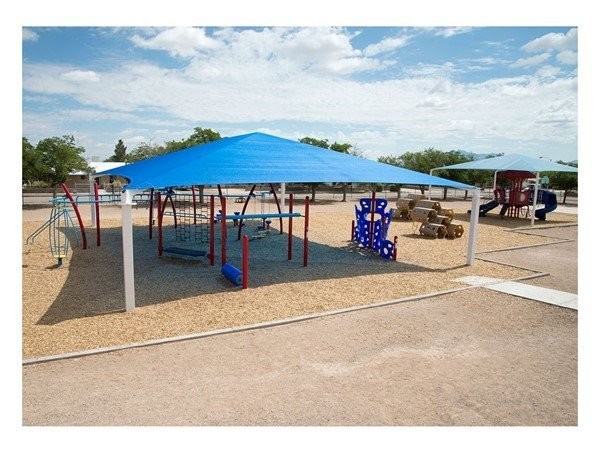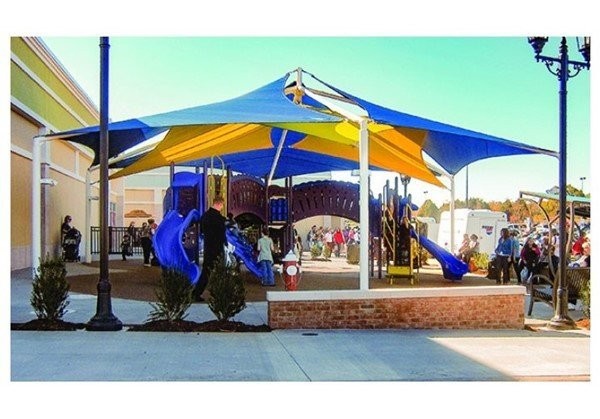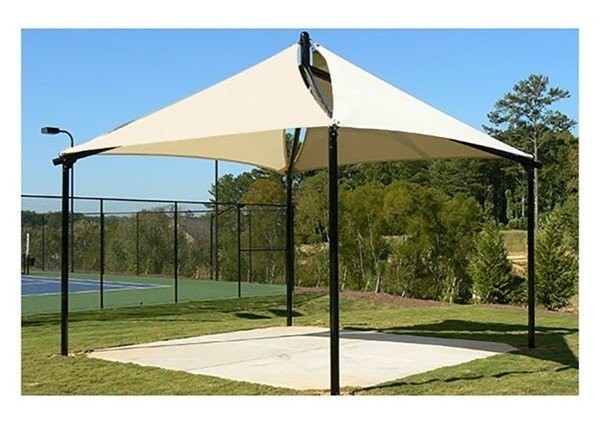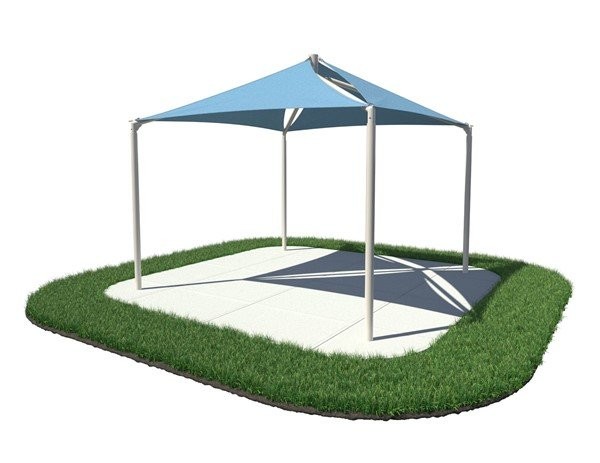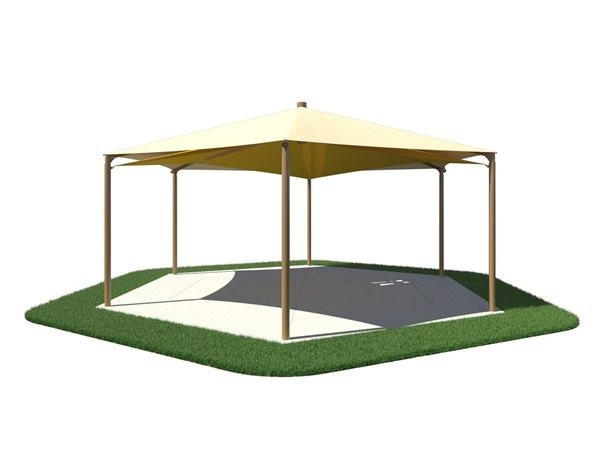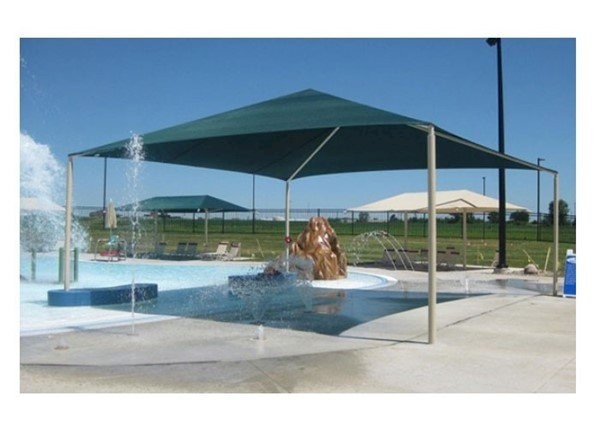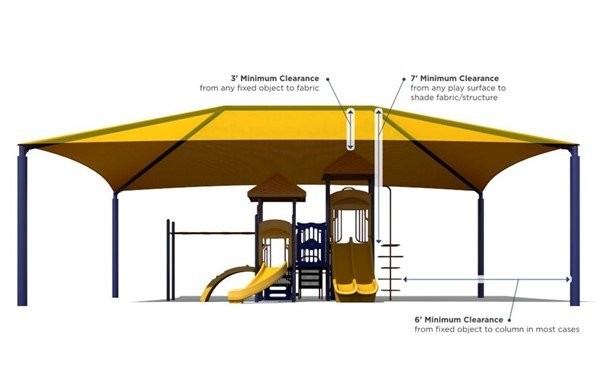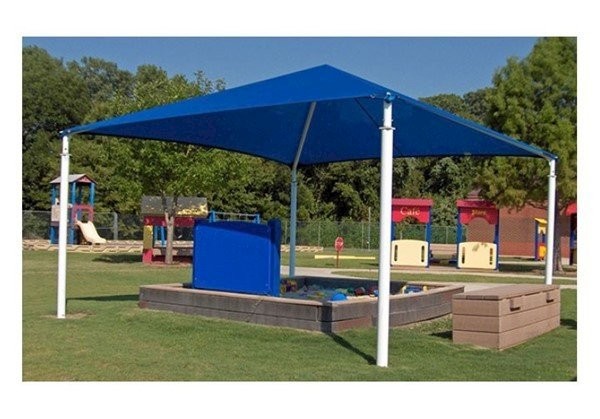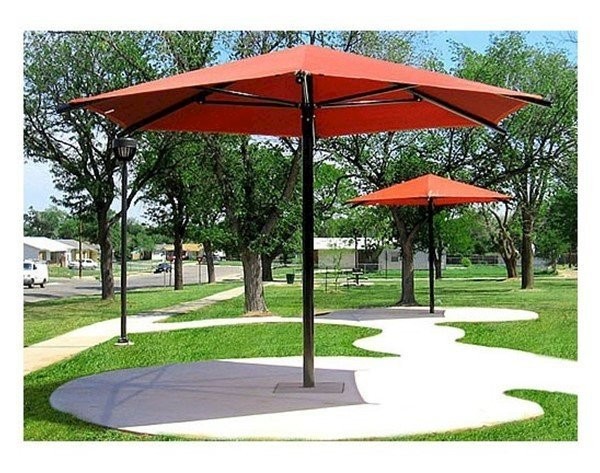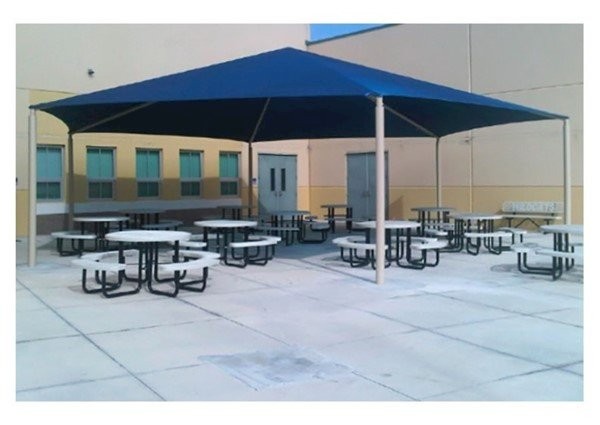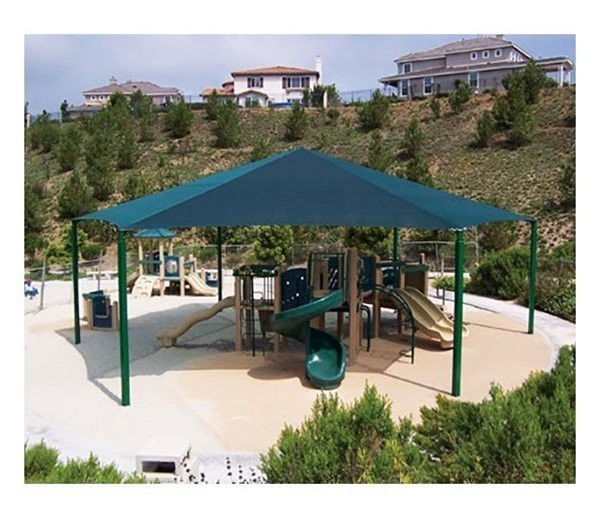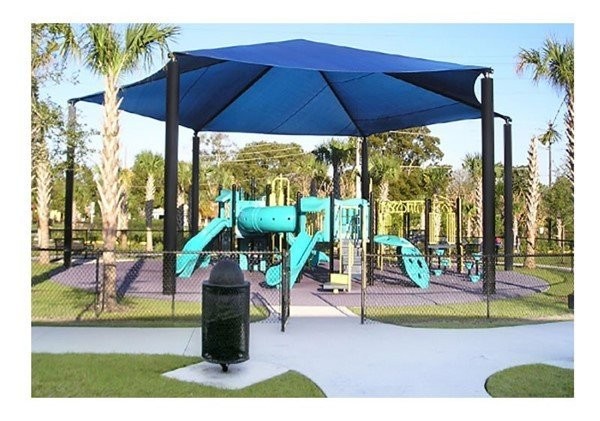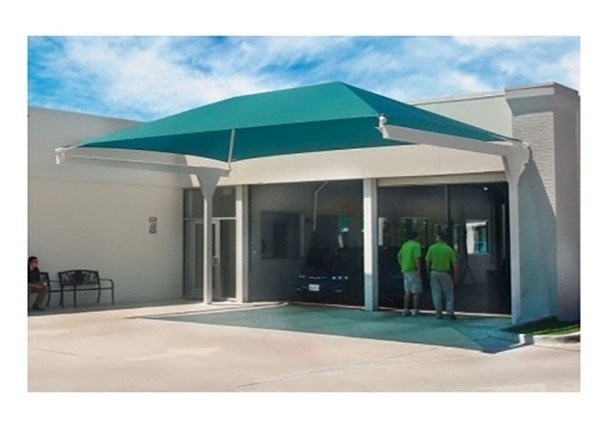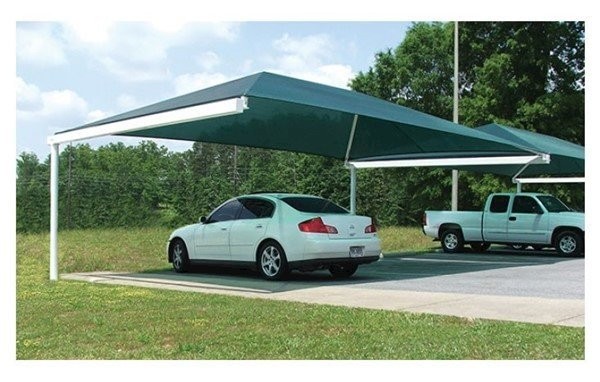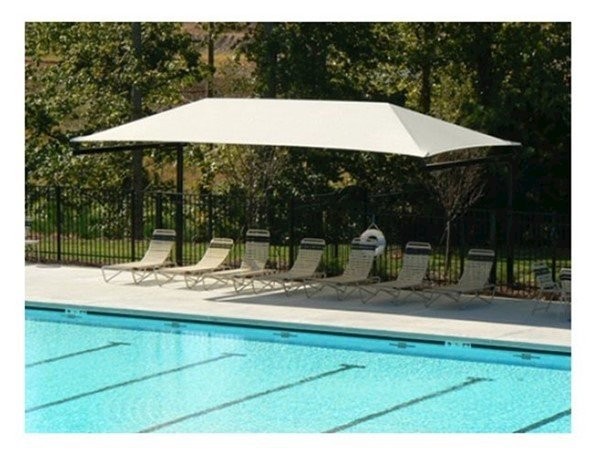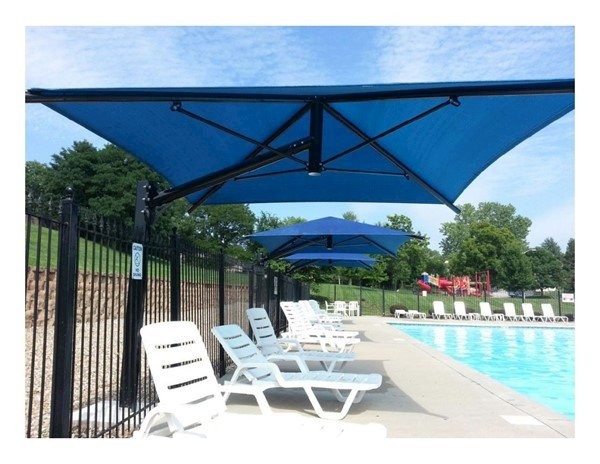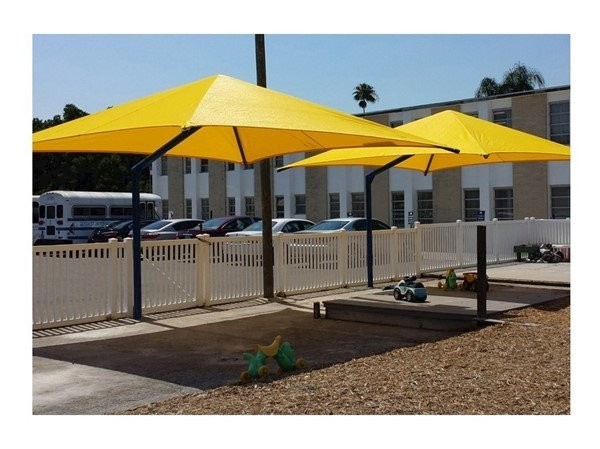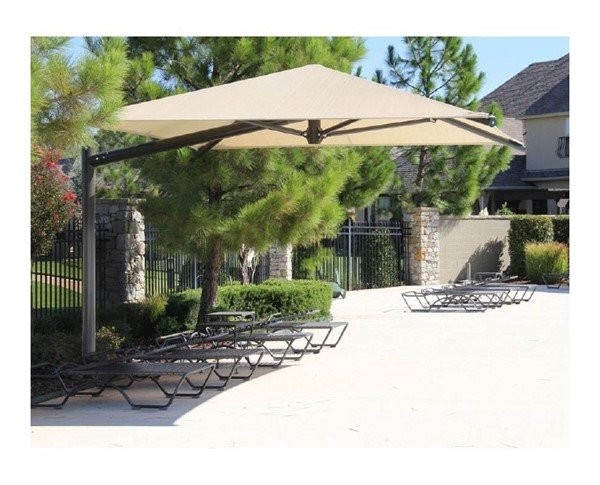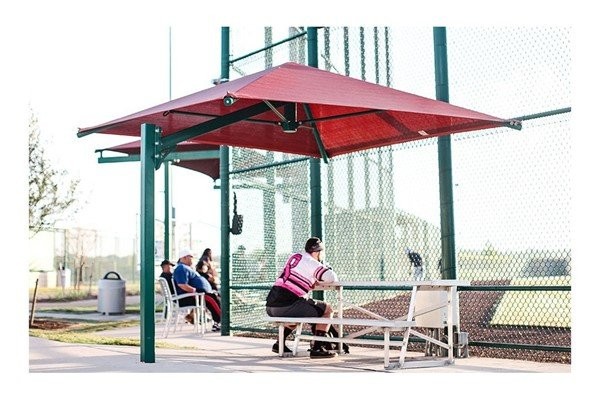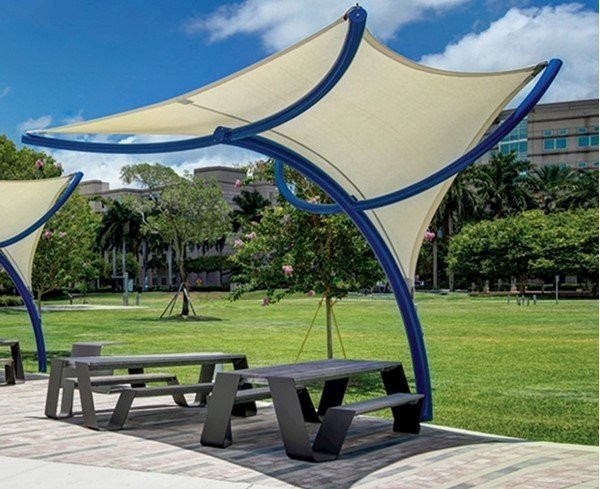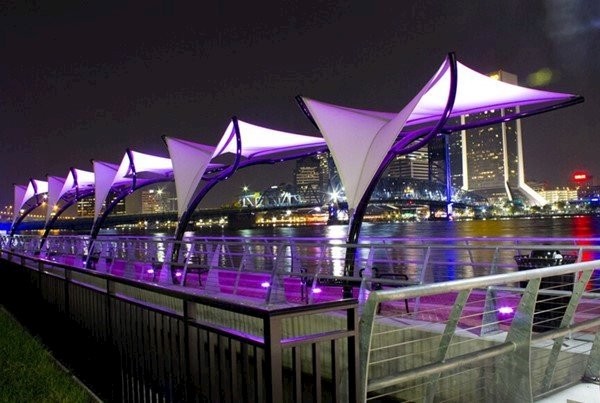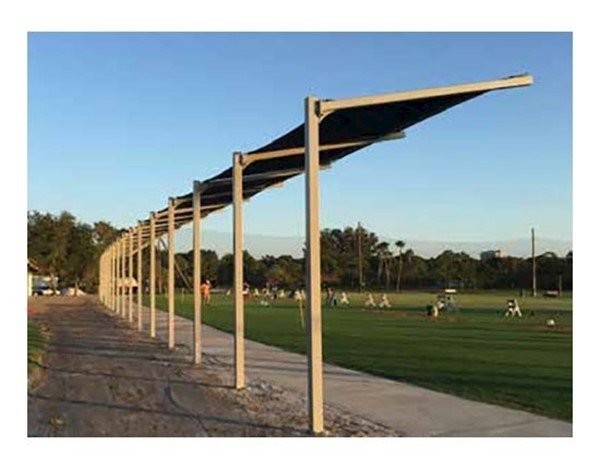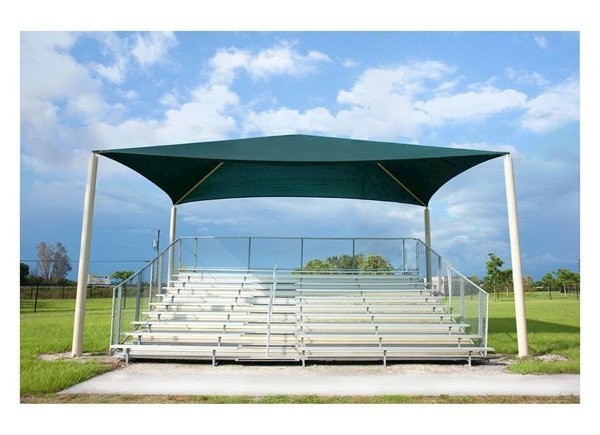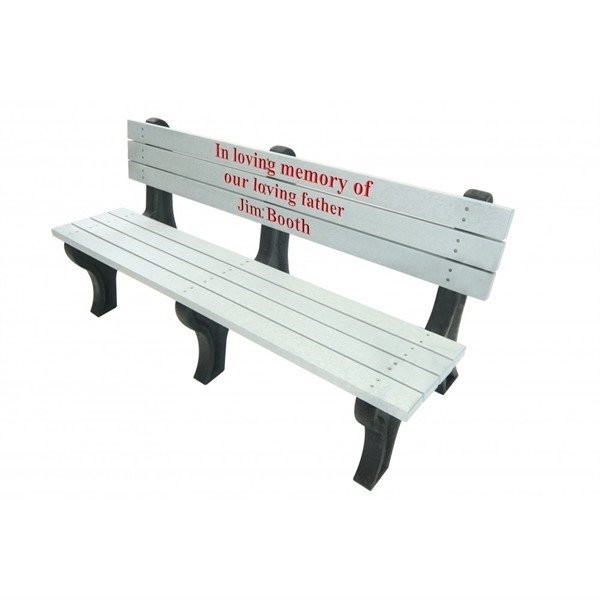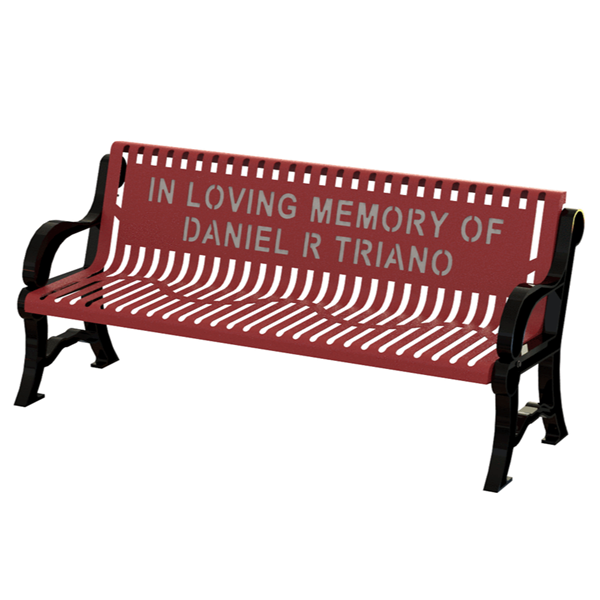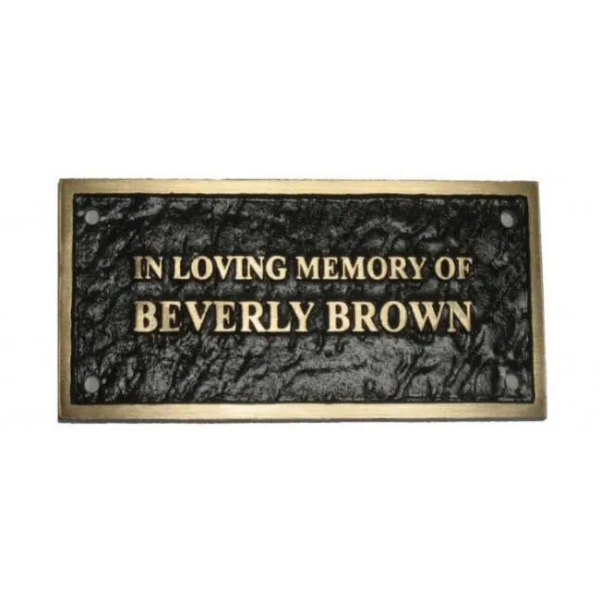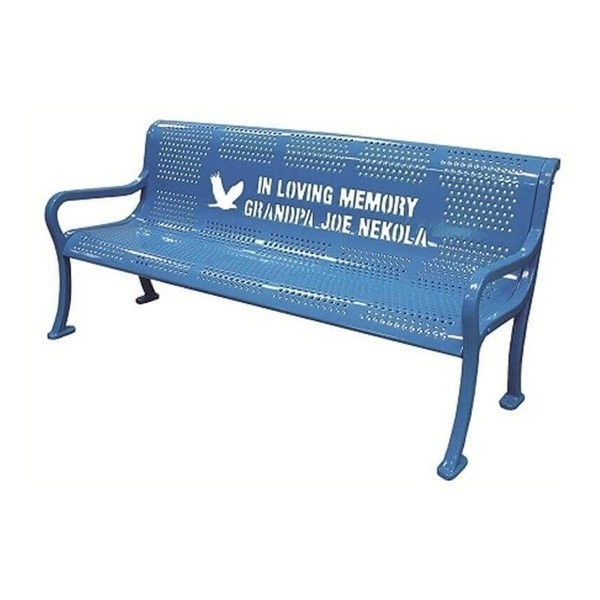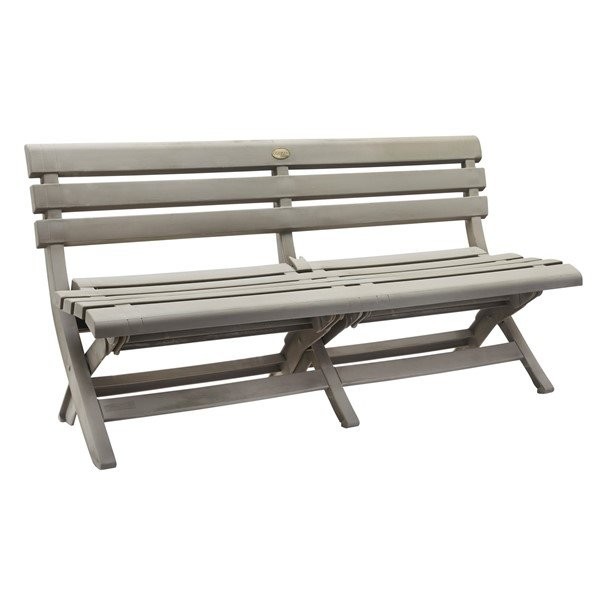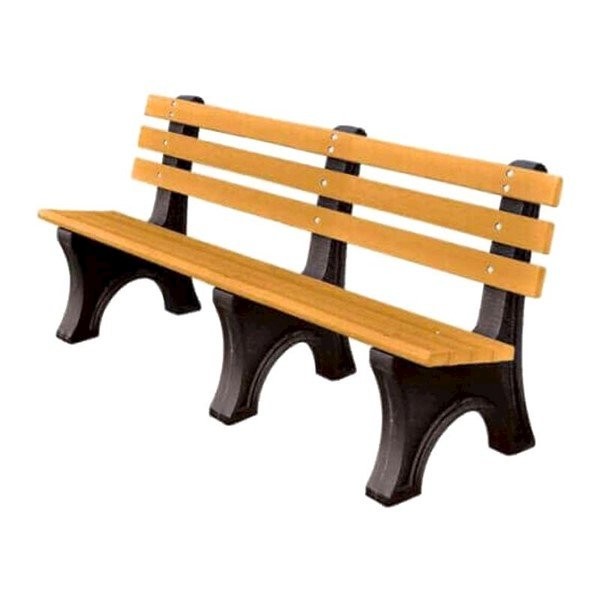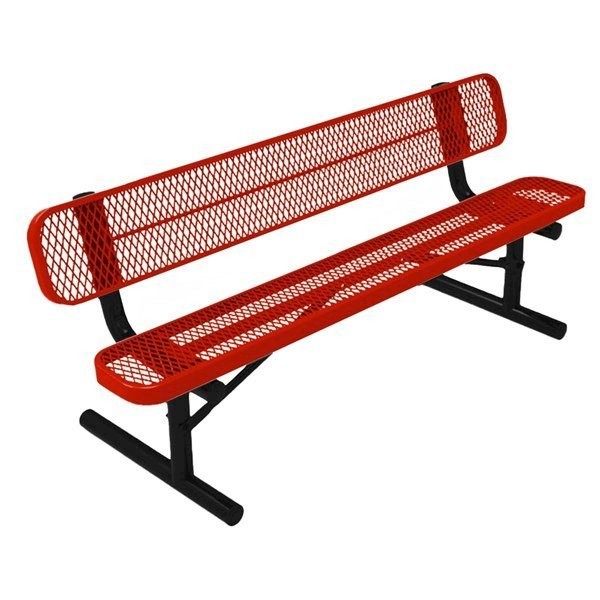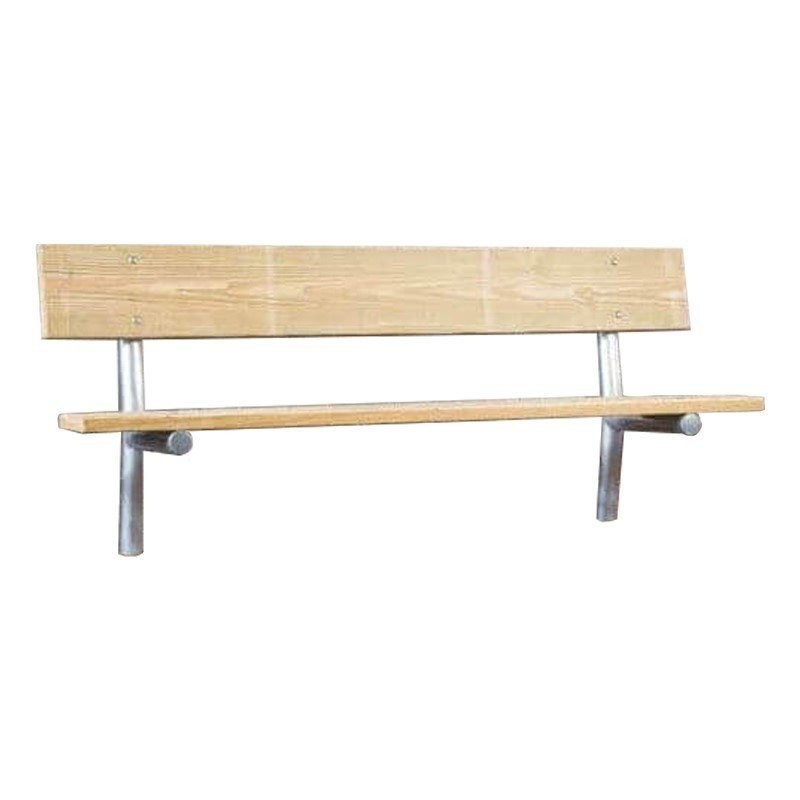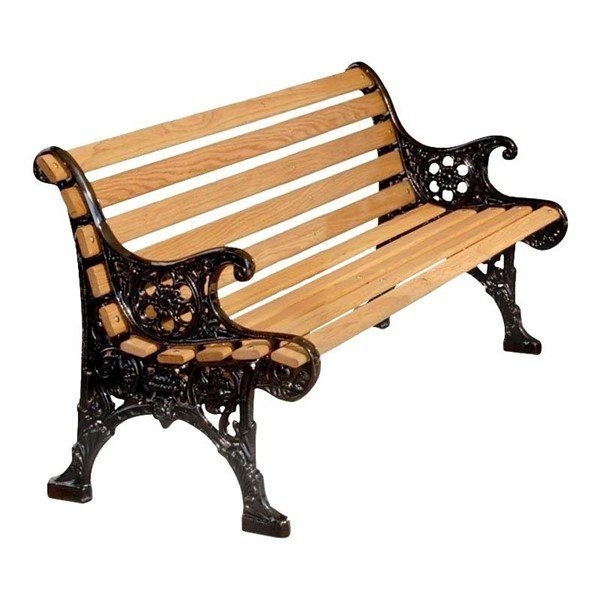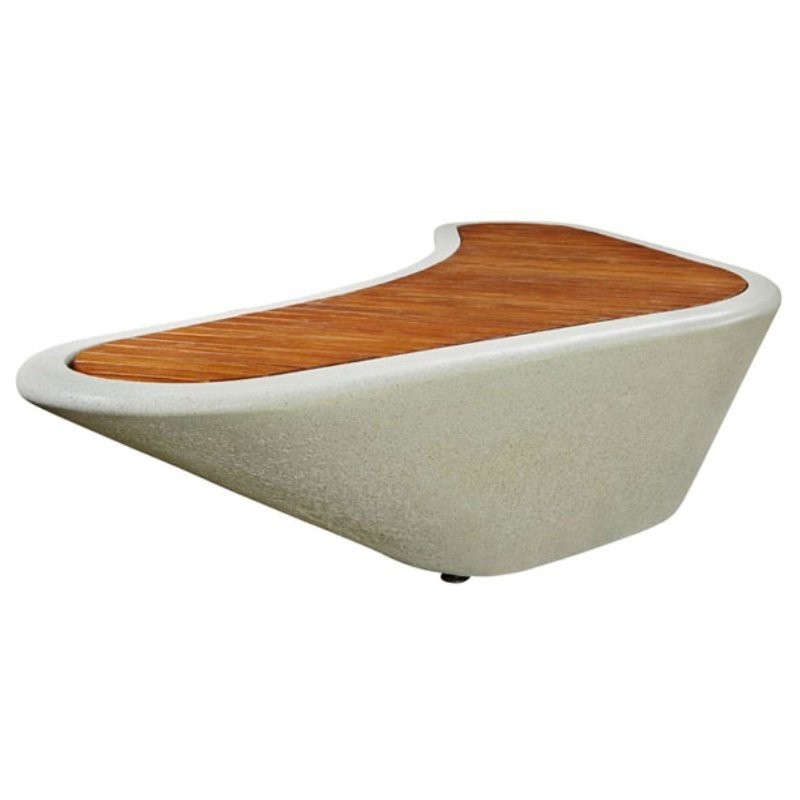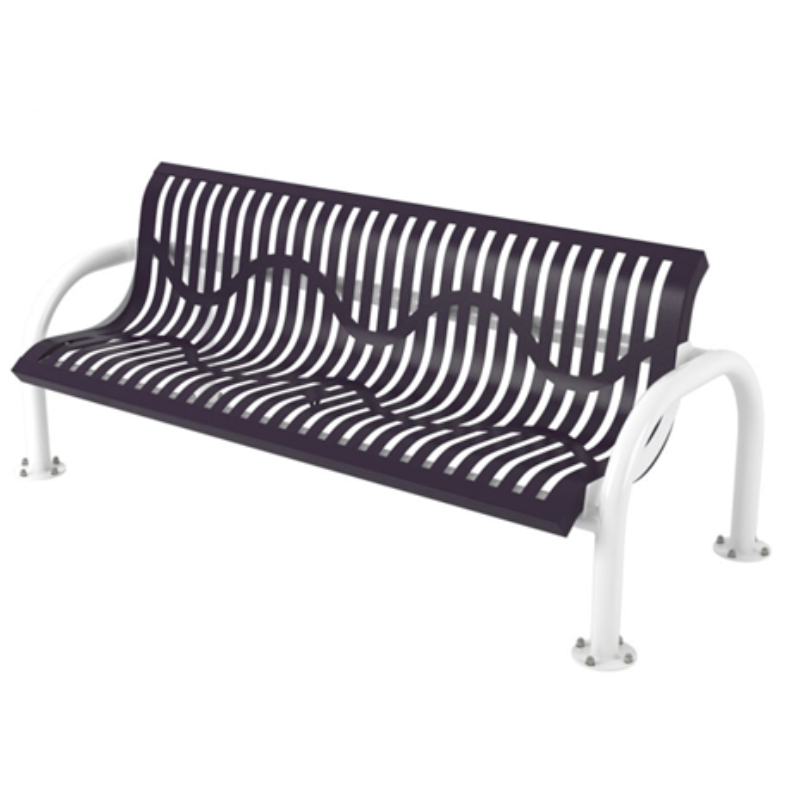Installing shade structures in parking lots provides multifaceted benefits beyond simply shielding vehicles from sunlight. Thoughtfully designed shade systems enhance the parking experience for drivers, promote environmental sustainability, and even enable advances in smart technology integration.
This article explores the functionality of modern shaded parking structures, their advantages and innovations, and important considerations when evaluating options to meet the unique needs of any property.
Types of Shade Structures for Parking Lots
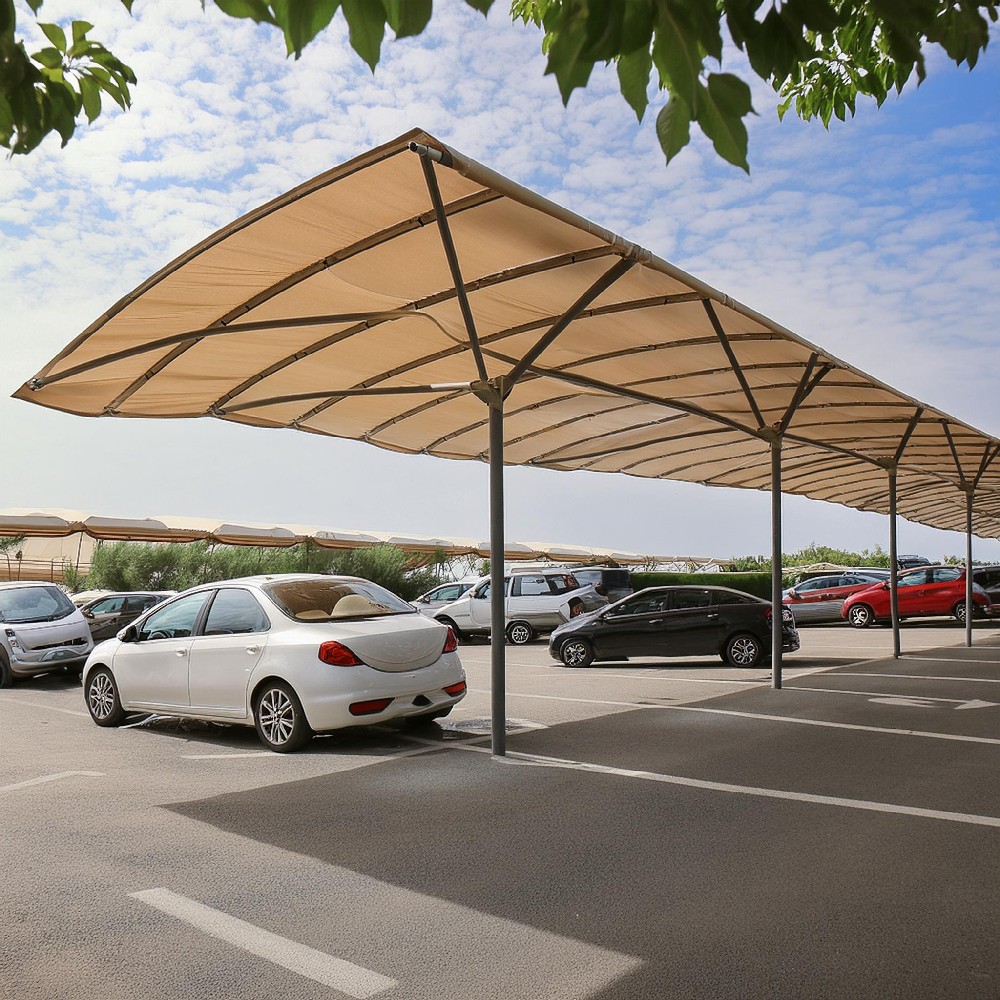
Parking lots serve as essential spaces for vehicles, but their exposure to weather elements often leads to various challenges, including damage from the sun, rain, and snow. To mitigate these issues and provide protection for vehicles, a range of commercial shade structures has been developed, each offering unique benefits suited to different environments and requirements. Here are the top urban shade structure varieties:
Fabric Sail Shades
Fabric sails stand out as one of the most adaptable and cost-effective shade solutions. These shades come in various shapes — triangular, square, or rectangular — and are suspended above parking stalls using poles or cables.
Made from breathable polyester or PVC-coated materials, fabric structures effectively block harmful UV rays while allowing for adequate air circulation. Their lightweight and custom sizing make them suitable to add shade for a temporary time period, catering to different aesthetic preferences and budget constraints.
Aluminum and Steel Canopies
For more permanent and robust commercial shade structures, aluminum and steel parking canopies are ideal. They provide full coverage over expansive parking lots and other outdoor spaces and are engineered to withstand heavy winds and long-term weather exposure. Metal is the best material choice for wind-resistant shade structures.
Powder-coated for weather resistance, these open-framed parking canopies offer durability and flexibility in design, such as straight columns for simplicity, sloped columns for enhanced water runoff, and curved beams for architectural flair. Their open-sided design prevents trapped moisture while providing adequate spacing between columns.
Solar Panel Shade Structures
Combining functionality with sustainability, solar panel shade structures integrate renewable energy production with vehicle protection. These specialized commercial shade structures incorporate solar panels directly into the roof system, converting sunlight into renewable energy as they provide shade to the vehicles below.
They essentially transform traditional parking lots into solar energy power plants, offering environmental and economic benefits through clean energy generation. Crystalline silicon and thin-film solar panel technologies are commonly used, and optimizing their positioning along latitude lines maximizes sustainable energy generation potential.
Living Plant Shade Systems
Incorporating principles of biophilic design, living plant shade structures merge vegetation with shade provision. These systems utilize trellises to foster the growth of leafy vines or small trees, creating natural, living canopies that offer cooling effects to outdoor areas.
Water-efficient native species are often used for green parking lots, including vines like campsiss radicans and climbing plants such as hydrangea seemannii. Small-canopy trees like crape myrtles and fringe trees are also viable options, adding shade and aesthetics.
Portable Umbrellas and Tents
When flexibility is paramount or permanent installations are impractical, oversized umbrellas and tents serve as customizable mobile shade systems. Constructed with sturdy commercial-grade frames and water-resistant canvas, these portable structures provide ample height clearance and UV protection. Materials like marine-grade polyester, PVC-coated polyester, and Teflon-coated fiberglass offer durability, with high-wind models capable of withstanding intense gusts when properly secured.
These diverse commercial shade structures cater to varying needs, environments, and preferences, offering innovative solutions to protect vehicles while enhancing the functionality and aesthetics of parking lots. Shop for commercial shade solutions for your parking lot or outdoor space.
Advantageous Aspects of Shade Structures in Parking Lots
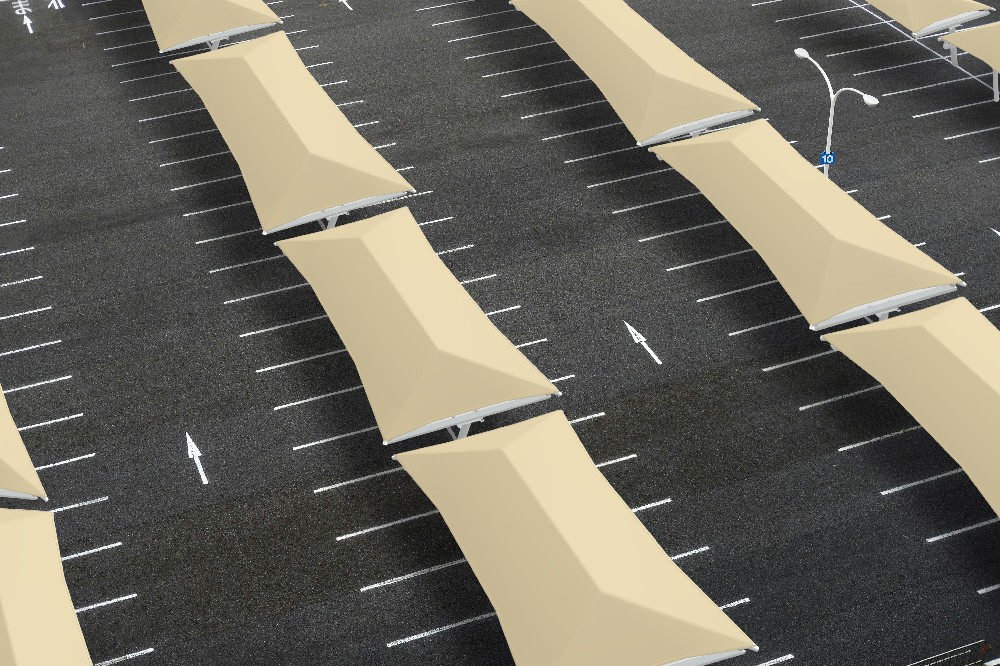
Installing thoughtfully engineered commercial shade structures over parking spaces produces measurable benefits:
Vehicle Protection from Sun Damage
Parked cars suffer accelerated deterioration from constant sun exposure in uncovered lots. UV rays and summer heat bake interiors, crack dashboards, and fade paint. Adding shade can preserve asset lifespan and resale value. Well-placed commercial shade structures also prevent snow and ice accumulation in colder climates.
According to AAA, interior vehicle heat can reach 117°F-172°F without shade relief on hot days. Such extremes damage upholstery, vinyl, and electronic components over time. UV rays contribute to faded paint and finishes.
Driver and Passenger Comfort
During hot summer months, vehicle interiors can reach dangerously high air temperatures without shade refuge. Commercial shade structures that create cooler zones allow more comfortable entry/exit and loading times for children, seniors, and pets. Adding shade structures also enables sitting in vehicles with windows down.
Pedestrian Safety and Navigation
Marked covered walkways guiding pedestrians between parking zones and destinations provide important refuge from sun and rain. This dedicated shade presence offers safer navigation compared to crossing open lots. Signage and painted lines should distinguish pedestrian zones within larger vehicular areas.
Charging Station Integration
Electric vehicle charging stations work best in temperate conditions. Avoiding hot parked EVs helps maintain optimal battery life and charging capacity. Solar panel canopies further power convenient renewable energy refueling.
Environmental and Sustainability Aspects of Shaded Parking Lots
Besides delivering essential functionality, today's parking shade structures align with environmentally conscious design in several ways:
Urban Heat Island Mitigation
Paved parking lots contribute significantly to the urban heat island effect through accumulated solar heat retention. Shade coverage helps counter heat amplification, cool adjacent microclimates, and reduce ballooning HVAC energy drain.
According to the EPA, urban heat islands can raise city-wide temperatures by 1°C-3°C. Countermeasures like commercial shade structures, light surfaces, and vegetation ease this warming burden.
Stormwater Management
Adding shade over impervious surfaces lessens evaporation rates and enables rainwater harvesting integration in outdoor environments. Collected precipitation may fill cisterns for landscape irrigation or other reuse applications. This offsets storm drain contribution while improving water conservation.
Reduced Carbon Emissions
Solar panel shade structures generate clean renewable energy fed back into the grid or used for EV charging. Their upside extends beyond the parking application through positive climate change impact. Each kW power output averts 1,700 lbs of CO2 emissions over panel lifetimes.
Biophilic Wellness Support
Living plant shade systems foster greater human/nature connection through the psychological benefits of more organic surroundings. Research confirms unconscious stress reduction arises from increased natural elements. As an added advantage, plants filter particulate pollution and absorb noise.
How Shade Structures Affect Commercial Spaces

For retail establishments, restaurants, and mixed-use developments, shaded parking lots influence customer experience, business operations, and property value. Well-planned coverage aligns with revenue goals across the hospitality and commercial sectors.
Enhanced Curb Appeal & Accessibility
Visually appealing commercial shade structures essentially act as architectural extensions of the buildings they adjoin. Attractive designs reflect the venue’s brand aesthetic for continuity from indoor to outdoor spaces. They also enable better wayfinding when thoughtfully sited near main entrances.
For shops and eateries, the covered walk from parking spots to the front door makes that transition more inviting. Protection from direct sun and rain encourages lingering and spending time. Commercial shade structures essentially function as outdoor welcoming gestures.
Expanded Outdoor Activities
Adding shade transforms traditional parking zones into more livable community spaces for everything from relaxing to dining to children’s play areas. Businesses can creatively program the area underneath parking canopies for seating, bike parking, meetings, pop-up vendors, and special events. Covered space enables activities otherwise deterred by direct sunlight.
One popular approach utilizes a solar carport structure over parking for electric vehicle charging stations and adjacent patio furniture for open-air work and relaxation areas.
Reduced HVAC Loads
Strategically placed parking shade lowers radiant heat gain on building walls and glazing to reduce cooling demands within. Studies confirm interior spaces protected by well-designed exterior shading require considerably less air conditioning energy consumption. Any reduction in utilities helps lower operating expenses.
Increased Asset Value
Modern shade systems elevate property value for the entire site through improved aesthetics, functionality, and sustainable energy offsets. As communities expect more climate-friendly amenities and innovative energy solutions, a solar carport for example contributes to better valuation. Smart shade investments make commercial space more attractive for lease rates and sales.
For new developments, architects work closely with shade manufacturers to seamlessly integrate structures into overall design concepts and optimize value engineering. The cost savings in avoided utilities often offset construction.
Careful consideration of solar orientation, pedestrian access, visibility, and event programming allows commercial shade structures to do more than simply cover cars. Their versatility makes them valuable contemporary mixed-use space enablers.
Technological Innovations and Future Trends
![]()
Shade technology continues advancing alongside synergistic parking lot innovations like:
Smart Sensor Integration
Internet of Things (IoT) sensors relay helpful parking metrics like space availability, solar power generation, and charging status. Web/mobile apps synthesize data for real-time functionality to improve navigation and access.
Autonomous Mobility Preparedness
Engineers increasingly future-proof parking infrastructure for inevitable self-driving vehicles. Uniform shading aids autonomous navigation capabilities relying more heavily on camera and sensor equipment. Dedicated AV spaces may enable advanced vehicle-to-infrastructure communication.
Drone Delivery Infrastructure
Logistics drones promise ultra-fast package delivery, with shaded landing pad zones doubling as battery swap/recharging stations between flights.
Adding shade to parking lots exponentially amplifies functionality far beyond basic vehicle coverage. The latest high-performance designs propel sustainability, technology expansion, extreme weather resilience, and renewed human connections through intentional integration. When strategically conceived as multifaceted landscape assets, their structural engineering warrants the investment.
About Furniture Leisure
Furniture Leisure has led the commercial outdoor furniture industry since 2003. For over 20 years, we have supplied thousands of customers nationwide with durable, quality furnishings built to withstand intensive public use.
We offer a huge selection of commercial-grade products like shade structures, picnic tables, grills, benches, bike racks, trash receptacles, bleachers, and more. Our outdoor amenities include hotels, parks, apartments, campgrounds, offices, and many other public spaces across the country.
At Furniture Leisure, our experienced team works closely with clients to recommend customized furnishing packages tailored to your space and needs. We deliver beautiful, functional outdoor projects within budget.
Contact us today to explore commercial shade structures for sale. Our experts guarantee outstanding service and complete satisfaction.
Frequently Asked Questions
What Are the Main Reasons for Installing Shade Structures in Parking Lots?
The primary motivations to provide shade in traditional parking lots include protecting cars from sun damage, providing relief from summer heat, integrating solar panels for sustainable energy, and guiding pedestrian walkways for safety. Secondary benefits of installing shade structures involve future-proofing for drones and autonomous vehicles.
How Long Do Parking Lot Shade Structures Last?
Commercial shade fabric typically lasts 4-8 years before needing replacement. Steel and aluminum shade structures last 15-30+ years with proper maintenance. Solar panel carports may function for 25+ years but panels themselves work best for 20 years.
What Are Shade Structures Made Of?
Common materials used to build shade structures include powder-coated galvanized steel, extruded aluminum, HDPE lumber composites, and wood laminates for column supports. Shade canopy fabric options range from polyester, PVC, and vinyl to eco-friendly PET felt, recycled HDPE, and PTFE fiberglass composites.































































































